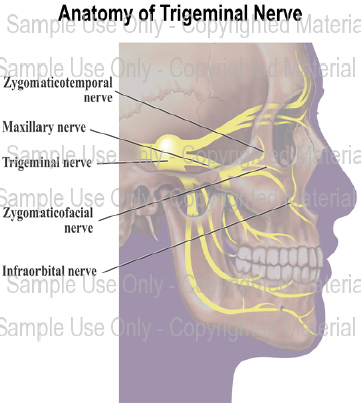What is a Microvascular Decompression for Trigeminal Neuralgia?
Trigeminal Neuralgia is a disorder of the trigeminal nerve which at times causes intense pain in the face. This procedure involves having a small cut made behind the ear on the same side as the pain. A small amount of bone will be removed from the skull. A microscope is then used to identify the trigeminal nerve and the blood vessels compressing the nerve. Once this is done the surgeon will place some protective cushioning (usually Teflon) between the vessel and the nerve to ensure separation. The removed bone will be replaced with metallic plates and screws. The skin will be closed with sutures.
My Anaesthetic
This procedure will require an anaesthetic.
See About your Anaesthetic information sheet for information about the anaesthetic and the risks involved. If you have any concerns, talk these over with your doctor.
If you have not been given an information sheet, please ask for one.
What are the risks of this specific procedure?
There are some risks/complications with this procedure.
Common risks include:
- Failure to adequately relieve the pain.
- Bleeding. Bleeding is more common if you have been taking blood thinning drugs such as Warfarin, Asprin, Clopidogrel (Plavix or Iscover) or Dipyridamole (Persantin or Asasantin).
- Small areas of the lung may collapse, increasing the risk of chest infection. This may need antibiotics and physiotherapy.
- Increase risk in obese people of wound infection, chest infection, heart and lung complications, and thrombosis.
Uncommon risks include:
- Cranial nerve damage. This may result in loss of hearing, facial weakness & numbness, double vision, hoarse voice, difficulty swallowing &/or impaired tongue movements.
- Hydrocephalus. This may be temporary or permanent and may require a second operation.
- Brain fluid leakage can occur after the operation. This may require further surgery.
- Infection inside the brain. This will require further treatment.
- Weakness of chewing muscles on the effected side of your face. This is usually temporary.
- Heart attack. A heart attack because of the strain on the heart or a stroke.
- Clots in the leg (deep vein thrombosis or DVT) with pain and swelling. Rarely part of this clot may break off and go into the lungs.
Rare risks include:
- Bleeding inside the head or brain. This would require further surgery.
- Meningitis. This would require further treatment.
- Seizures. This would require further treatment.
- Death is rare due to this procedure.


 Appointments
Appointments